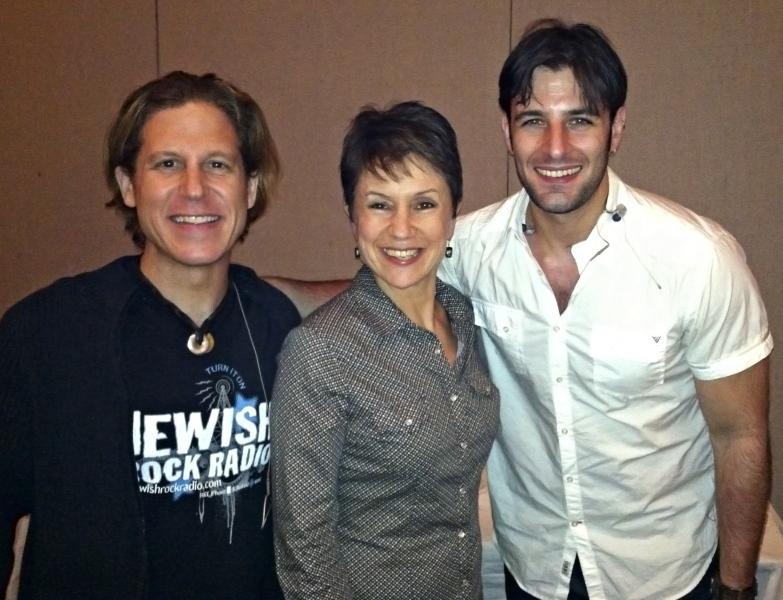- Home
- Play & Learn Home
- Online Enrichment
- Experience Modern Israel
- Israel It's Complicated
- Jewish and Me
- Jewish Holidays Jewish Values
- Jewish Values in Genesis and Jewish Values in Exodus
- Min Ha’aretz
- Our Place in the Universe
- Simply Seder
- The Prophets: Speaking Out for Justice
- Making T'filah Meaningful
- Make, Create, Celebrate
- Yom Haatzmaut Resources
- Hebrew Apps
- About The OLC
- What is the OLC?
- Introduction
- Get Started
- Resources
- OLC Content
- Parent Materials
- See My OLC Classes
- Store
Behrman House Blog
What I Learned at Songleader Boot Camp (and I can’t carry a tune)
Written by Terry Kaye, 15 of April, 2013
 I was in Boston last weekend at Rick Recht and Sheldon Low’s two-day Songleader Boot Camp (SLBC). I’m no song leader nor a musician, so why go? A couple of reasons:
I was in Boston last weekend at Rick Recht and Sheldon Low’s two-day Songleader Boot Camp (SLBC). I’m no song leader nor a musician, so why go? A couple of reasons:
- Rick Recht gave us a taste of SLBC leadership techniques at the Jewish Educators Assembly Conference in Dallas in January and I was intrigued.
- I wanted a behind-the-scenes look at two popular musician-performers in action.(If you like seeing how they film scenes from “Game of Thrones,” then you get it.)
- Behrman House is exploring developing music curricula and this seemed like a good way to be exposed to a range of music talent, songleading techniques, and music styles.
After I got over the initial fish-out-of-water feeling (42 songleaders, cantors, and singing rabbis—most with guitars and/or drums—and me, apparently the only non-musician in the group), and because Rick and Sheldon welcome the presence of non-musicians, I relaxed into the experience. Most important take-away: the skills (note, I didn’t say “talent,” though talent was evident in abundance) one needs to lead a class, group, or audience in song are no different from the skills one needs to lead any group or even to enrich person-to-person interactions.
Here’s just some of what I learned:
- Use every part of your body in engaging a group or audience—your eyes (create a “visual lock” even with people in the back of the room—creates rapport, indeed intimacy), your smile (of course), your chin (tilt up), your arms (ask Rick and Sheldon about 75% and 100% clapping), your stance and how you use your legs (marching, stomping, etc).
- Make other people the stars. Mention group members by name, thank them, thank them again, thank the youth choir, and their parents for their commitment. Extrapolate from that to your own work—give shout outs to your committee members by name, lay leaders who give their time, students who do nice things for others. Be humble and grateful, and people will respond.
- Get centered when things go wrong. It’s going to happen in any performance, presentation, or class. Remember, when you’re “on stage,” you are the man (or woman). Never let your role down. The audience won’t notice, and, if they do, won’t care as much as you do. So, stay psyched up, stay calm, and stay centered.
- Be vulnerable and open to learning from your audience. Take your cues from your audience or group. Observe them carefully. Are they alert and attentive, bright-eyed? Or is their attention wandering? If they’re drifting, change the environment. Do something unexpected. Move in closer to their personal space (but don’t invade it). Activate them with physical movement. Keep the room temperature cool!
- Exceed expectations. Whether there are 5 people in the audience or group, or 500, your goal is to transport and change them. To create a sense of purpose. To give them the very best of yourself and no less. To send them home humming, singing, repeating a line you used—moved and changed in some way.
Take a look at these sales tips for the similarity between SLBC techniques and powerful, charismatic, and engaging sales presentations.
Closing tip: Stream Jewish music from www.jewishrockradio.com (click “Listen now”) or download the app and play as students are coming into class, the group is entering the room for a meeting, or before your presentation. Not only will you create a Jewishly charged atmosphere, you’ll also change the focus of the group, get them into a receptive state, and raise the energy in the room. It’s also a terrific mark of respect for your group that you took the time to do that. Warning: If you’re not already, you’re likely to get hooked on www.jewishrockradio.com. I did.
Terry Kaye is Vice President and Director of Training and Educational Services at Behrman House.

